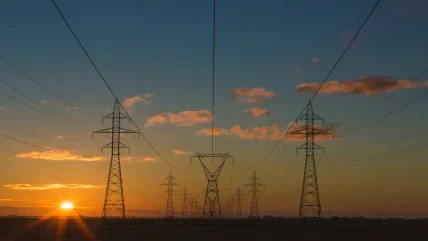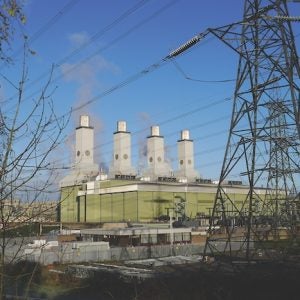
The UK government dubbed 30 March ‘Green Day’ (aka ‘Energy Security Day’) and published more than 40 documents (over 2800 pages) – including sector strategies, consultations and analyses – on its energy and climate future.
The day allowed the government to reveal its thinking across the economy and in specific tracks simultaneously. It was also a response to significant recent developments: a legal ruling last year that the government had failed in its duty to produce a Net Zero plan; the ongoing energy crisis that has followed the invasion of Ukraine by Russia and resulting energy price spikes; concerns over security of supply; and the need to respond to an independent review of Net Zero by one of the government’s own MPs, Chris Skidmore.
Skidmore concluded that climate change and Net Zero was the key industrial opportunity of the age and said the UK must respond to large-scale enabling and subsidy frameworks such as the USA’s Inflation Reduction Act and the EU’s Green Deal Industrial Plan, if it is to retain its place as a climate change leader and win industrial benefits. After the publication blizzard it was not clear that the government had produced a coherent holistic strategy that would fully respond to its critics. The energy industry and its supply chain was not satisfied that there was enough progress on a framework to deliver the low-carbon
energy required, particularly in moving from strategy and consultation to delivery. Customer representatives, from industrial to domestic customers, had similar concerns. Nevertheless there was significant progress and welcome detail.
In an introduction to ‘Powering Up Britain’, a framework document, Grant Shapps MP, secretary of state in the recently formed Department for Energy Security and Net Zero (Desnz) focused on energy security, which he said was, “one of this government’s greatest priorities.” But he described energy security and net zero as “two sides of the same coin,” and said, “After decades of reliance on imported fossil fuels, the new department’s mission is to replace them with cheaper, cleaner, domestic sources of energy.”
There was significant progress with regard to large power generation and for major users seeking to decarbonise and secure energy supplies.
Delivering new nuclear
The industry has been waiting for details on ‘Great British Nuclear’, a new delivery body and funding route for new nuclear, for which a scoping document was completed last year. The government promised to recruit for the body immediately. It said the “first priority of GBN” – under an interim chair and chief executive – is to launch a competition to select the best small modular reactor technologies. There will be a market engagement in April with the second phase launched in the summer and “an ambition to assess and decide on the leading technologies by autumn.”
The new organisation will be the route to co-fund the selected technologies through their development and ensure the right financing and site arrangements are in place. The government reiterated plans to take two Final Investment Decisions (FIDs) in the next parliament (ie 2024-2029), following on from a planned FID on Sizewell C in this parliament (ie by mid 2024).
At present, new plants will be limited to existing nuclear sites. A revised planning framework is overdue (see below). The government promised a proposed approach to siting new nuclear projects later this year, but consultation and parliamentary scrutiny mean a new framework would not be in place before 2025.
Carbon capture and storage and hydrogen
The government maintains that carbon capture and storage (CCS) forms part of the most cost-effective route to net zero, and represents a significant economic opportunity, with the potential to support up to 50 000 jobs and deliver £4-5 billion in exports by 2050. The UK’s ambition remains to build four operational CCS plants in industrial clusters by 2030 and to capture 20-30 Mt per year of carbon dioxide by that time. The so-called ‘clusters’ are areas where heavy industry is concentrated and infrastructure like pipelines transporting carbon dioxide for disposal would have multiple users.
Following the selection of HyNet (on the west coast) and the East Coast Cluster as ‘Track-1’ CCUS clusters in November 2021, and the publication of a shortlist of power CCUS, industrial carbon capture, waste and CCUS- enabled hydrogen projects in August 2022, the Department for Energy Security and Net Zero has selected “eight projects to proceed to negotiations for support through the relevant business models”. The eight projects that form this “Track-1 project negotiation list” and which are said to “represent a range of innovative CCUS technologies” are as follows:
East Coast Cluster
- Net Zero Teesside Power bpH2Teesside
- Teesside Hydrogen CO2 Capture
HyNet Cluster
- Hanson Padeswood Cement Works Carbon Capture and Storage Project
- Viridor Runcorn Industrial CCS
- Protos Energy Recovery Facility
- Buxton Lime Net Zero
- HyNet Hydrogen Production Plant 1 (HPP1)
The government says it will launch a process later this year to expand membership of the Track-1 clusters.
It will also launch a process to identify two ‘Track-2’ industrial clusters for follow-on CCS deployment.
The industrial clusters are also centres for developing hydrogen production options. The UK is hedging its bets by supporting both ‘green’ hydrogen from water electrolysis, powered by renewable energy, and ‘blue’ hydrogen options from gas with CCS. On ‘Green Day’, grants from three funding streams were announced for innovative hydrogen production, including two projects, both gas with CCS.
The government promised two further electrolytic hydrogen funding rounds from the £240 million Net Zero Hydrogen Fund in 2023, totalling 1 GW. Successful projects will be funded by government until a planned hydrogen levy is in place.
Government expects hydrogen to replace gas in direct industrial uses. But it also said that having hydrogen available in the power sector could achieve lower emissions at a lower cost. It is “committed to ensuring that market frameworks can support the development of new hydrogen to power projects” and it promised a consultation this year on potential design options for market intervention to support it.
Biomass
The UK has stopped offering Contracts for Difference for biomass-fuelled projects and has promised a revised biomass strategy by the end of June 2023. However, it regards bioenergy with CCS (BECCS), as an option for ‘negative’ carbon emissions and it says it “remains committed” to achieving 5 Mtpa of engineered greenhouse gas removals by 2030.
Two potential projects, one proposed by Drax Power Ltd and the other by Lynemouth Power Ltd, were judged last year to have met the minimum criteria for deliverability by 2027. Neither has been progressed as part of the industrial clusters listed above. But the government said it was “preparing for the deployment of power BECCS”, and had made “substantial progress” on potential business models and it would open negotiations with the two companies.
Renewables
The documents trumpeted the UK’s success in offshore wind and the Contracts for Difference mechanism. It described offshore wind turbines as “established technologies,” saying they need to be deployed at pace.
In contrast, building onshore wind farms has been almost impossible in England, where the governing Conservative Party had in effect placed a moratorium on new development (projects have gone forward in Scotland and Wales under devolved development consent powers). That moratorium has been partially lifted: the government recognised that onshore wind is “an efficient, cheap and widely supported technology” and is consulting on changes to planning policy in England. But in contrast to its call for pace in deploying offshore wind, onshore it wants “to deliver a localist approach that provides local authorities more flexibility to respond to the views of their local communities”.
The government is more enthusiastic about solar PV and it reiterated “ambitions for a fivefold increase in solar by 2035, up to 70 GW”.
It is also bullish about floating offshore wind and announced “kickstarting investment into the UK’s emerging floating offshore wind industry” with the launch of a £160 million fund to support port infrastructure projects.
Taking out barriers
Action was promised in several intractable areas. First is speeding up development consent and government will consult on
a revised set of energy national policy statements, including denoting offshore wind as “critical national infrastructure”. The second is cutting back the queue for network connections. A new Electricity Networks Commissioner has been tasked to advise government on what more can be done and an action plan is promised this year.
On long duration electricity storage the government expects the new UK Infrastructure Bank to take a lead and ‘crowd-in’ wider sources of finance. But it promised “an appropriate policy framework by 2024” and more grant funding imminently.
Has the government done enough?
Overall, the government message on its ‘Green Day’ was that the path to net zero outlined in the Net Zero Strategy is still the right one. It said, “There are significant opportunities for UK industry the whole way through the supply chain. We want UK companies to continue playing a key role in green supply chains, from nuclear to CCUS and electric vehicles”.
The Climate Change Committee, an independent body tasked with monitoring the UK’s progress towards Net Zero, was cautious on whether the ambition of the government’s publications matched their number. Its full analysis will be published in its annual Progress Report to Parliament in June.






